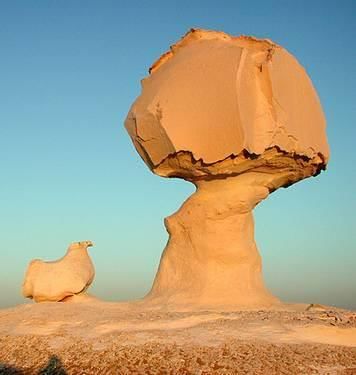NCERT Solutions for Class 7 Social Science - Our Changing Earth
Q1. Answer the following questions.
(i) Why do the plates move?
Ans: The plates move because of the movement of the molten magma inside the earth.
(ii) What are exogenic and endogenic forces?
Ans: The forces that work on the surface of the earth are called as exogenic forces. The forces which act in the interior of the earth are called endogenic forces.
(iii) What is erosion?
Ans: The wearing away of the landscape by different agents like water, wind and ice is called erosion.
 Erosion
Erosion
(iv) How are flood plains formed?
Ans: When the river overflows its banks, it floods off its neighbouring areas which deposit layers of fine soil and other material called sediments along its banks. This leads to the formation of a flat fertile floodplain.
(v) What are sand dunes?
Ans: The low hill-like structures formed due to deposition of sand at one place by the wind in the desert is called sand dunes.
 Sand Dunes
Sand Dunes
(vi) How are the beaches formed?
Ans: The sea waves deposit sediments along the shores which leads to the formation of beaches.
(vii) What are ox bow lakes?
Ans: Due to continuous erosion and deposition along the sides of the meander, the ends of the meander loop come closer and closer which in some time cuts off from the river and forms a cut-off lake, called an ox-bow lake.
 Oxbow Lakes
Oxbow Lakes
Q2. Tick the correct answer.
(i) Which is not an erosional feature of sea waves?
(a) Cliff
(b) Beach
(c) Sea cave
Ans: (b)
(ii) The depositional feature of a glacier is:
(a) Flood plain
(b) Beach
(c) Moraine
Ans: (c)
(iii) Which is caused by the sudden movements of the earth?
(a) Volcano
(b) Folding
(c) Flood plain
Ans: (a)
(iv) Mushroom rocks are found in:
(a) Deserts
(b) River valleys
(c) Glaciers
Ans: (a)
(v) Ox bow lakes are found in:
(a) Glaciers
(b) River valleys
(c) Deserts
Ans: (b)
Q3. Match the following.
(i) Glacier | (a) Seashore |
(ii) Meanders | (b) Mushroom rock |
(iii) Beach | (c) River of ice |
(iv) Sand dunes | (d) Rivers |
(v) Waterfall | (e) Vibrations.of earth |
(vi) Earthquake | (f) Seacliff |
- | (g) Hard bedrock |
- | (h) Deserts |
Ans:
(i) Glacier | (c) River of ice |
(ii) Meanders | (d) Rivers |
(iii) Beach | (a) Seashore |
(iv) Sand dunes | (h) Deserts |
(v) Waterfall | (f) Seacliff |
(vi) Earthquake | (e) Vibrations of earth |
Q4. Give reasons.
(i) Some rocks have the shape of a mushroom.
(ii) Flood plains are very fertile.
(iii) Sea caves are turned into stacks.
(iv) Buildings collapse due to earthquakes.
Ans:
(i) In the desert, the wind is an active agent for erosion which erodes the lower section of the rock more than the upper part. Therefore, some rocks have a shape of a mushroom having a narrower base and wider top.
 Rock have the Shape of Mushroom
Rock have the Shape of Mushroom
(ii) Flood plains are very fertile because floods deposit layers of fine soil and other material called sediments which is ideal for cultivation along its banks.
(iii) When cavities in sea caves become bigger and bigger only the roof of the caves remain to form sea arches. Further, erosion breaks the roof and only walls are left which forms the stacks.
(iv) During earthquakes, vibrations travel outwards from the epicentre as waves and propagate through the surface of the earth which produce sudden movements that lead to the collapse of buildings.
|
63 videos|552 docs|46 tests
|
FAQs on NCERT Solutions for Class 7 Social Science - Our Changing Earth
| 1. What is the meaning of the term 'plate tectonics'? |  |
| 2. What are the causes of earthquakes? |  |
| 3. How does the Earth's surface change over time? |  |
| 4. What are the different types of rocks found on the Earth's surface? |  |
| 5. How does climate change affect the Earth's surface? |  |






















